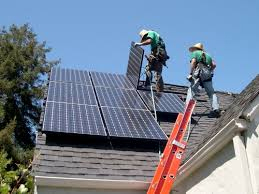A solar installation consists of many steps to be considered complete, initially you have the quote to a customer, either that customer enquired or their details were passed on to an installer.
In order to complete a quote the customer will generally only need to know which panel brand they want as the number of panels of the PV installation is restricted by both the 4kW ceiling on residential solar installs and the roof space available on the customer’s roof(s).
This can be determined by the installer either viewing images of the customer’s property or by visiting the site in person.
The 4kW restriction on residential roofs can be removed if the customer applies to their district network operator (DNO) with a G83 application and is approved. To be clear a 4kW system whilst being capable of providing up to 4kW of electricity will by default be reduced to 3.68kW output by your inverter, 3.68kW is the literal ceiling that needs permission to exceed, but as the inverter can reduce the output, 4kW is considered the actual maximum for residential properties.
Most every installer should be trying to achieve a 4kW system for their customer and so if there is not enough space for a standard 16 panels at 250w then increasing the solar panel wattage and reducing the number of panels required is an obvious choice.
Combinations like:
14 x 280w @ 3.92kW;
13 x 300w @ 3.9kW;
12 x 327w @ 3.92kW and so on
Once a solar panel system has been installed there are just a few more steps to take in order to claim your Feed In Tariff, firstly your installer will require some information from the customer:
- Inverter Serial Number, Make / Model
- Generation Meter Number, Make / Model, Generation Meter Reading
- Electricity Supplier, Name on the Electricity Bill
This information will allow the installer to produce the MCS and Benchmark Certificates, along with being able to source the appropriate Feed in Tariff Application Form required by the customer due to their Electricity supplier, an application to the customer’s DNO will also be made using the name on the electricity bill and finally product and warranty information can be provided for the exact equipment that has been installed for the customer due to the Makes and Models provided (Solar Panel Serial Numbers and gathered by the fitters on site).















